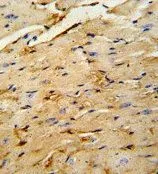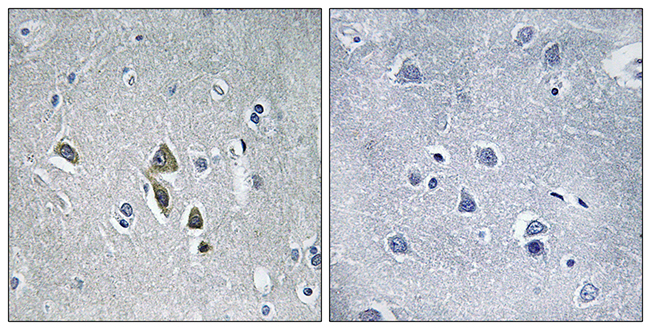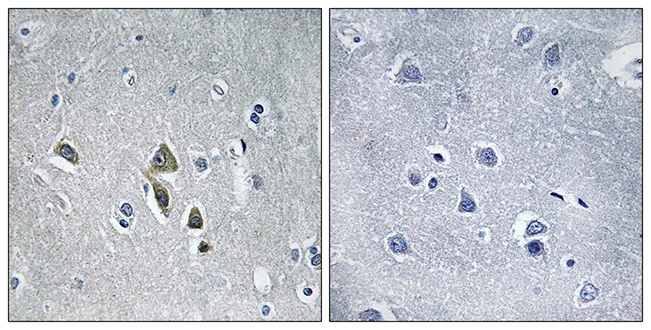
IHC-P analysis of mouse heart tissue using GTX81427 OAZ1 antibody, N-term.
OAZ1 antibody, N-term
GTX81427
ApplicationsWestern Blot, ImmunoHistoChemistry, ImmunoHistoChemistry Paraffin
Product group Antibodies
TargetOAZ1
Overview
- SupplierGeneTex
- Product NameOAZ1 antibody, N-term
- Delivery Days Customer9
- Application Supplier NoteWB: 1:1000. IHC-P: 1:50-1:100. *Optimal dilutions/concentrations should be determined by the researcher.Not tested in other applications.
- ApplicationsWestern Blot, ImmunoHistoChemistry, ImmunoHistoChemistry Paraffin
- CertificationResearch Use Only
- ClonalityPolyclonal
- ConjugateUnconjugated
- Gene ID4946
- Target nameOAZ1
- Target descriptionornithine decarboxylase antizyme 1
- Target synonymsAZ1, AZI, OAZ, ornithine decarboxylase antizyme 1, ODC-Az, antizyme 1
- HostRabbit
- IsotypeIgG
- Protein IDP54368
- Protein NameOrnithine decarboxylase antizyme 1
- Scientific DescriptionThe protein encoded by this gene belongs to the ornithine decarboxylase antizyme family, which plays a role in cell growth and proliferation by regulating intracellular polyamine levels. Expression of antizymes requires +1 ribosomal frameshifting, which is enhanced by high levels of polyamines. Antizymes in turn bind to and inhibit ornithine decarboxylase (ODC), the key enzyme in polyamine biosynthesis; thus, completing the auto-regulatory circuit. This gene encodes antizyme 1, the first member of the antizyme family, that has broad tissue distribution, and negatively regulates intracellular polyamine levels by binding to and targeting ODC for degradation, as well as inhibiting polyamine uptake. Antizyme 1 mRNA contains two potential in-frame AUGs; and studies in rat suggest that alternative use of the two translation initiation sites results in N-terminally distinct protein isoforms with different subcellular localization. Alternatively spliced transcript variants have also been noted for this gene. [provided by RefSeq, Dec 2014]
- Storage Instruction-20°C or -80°C,2°C to 8°C
- UNSPSC12352203







